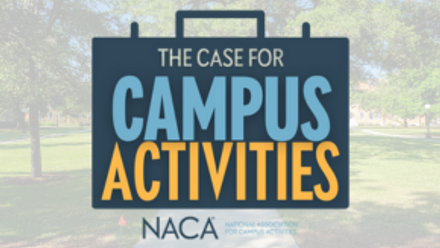Service With a Smile, Even When You Don’t Want To
As a part of the NACA team for 26 years, I know when customers – feel free to sub-in “students” or “clients” throughout – appreciate how you treat them. They will always reconnect and remember you, and in some instances, you may not even be the correct staff to handle the task. For me, some of these relationships have blossomed into lifetime friendships. What skills are needed, or what actions are taken to develop these positive relationships? Could it be that during the first encounter, you established a relationship through tone to connect personally?
In 2020, life as we know it changed significantly due to COVID-19. Because of the pandemic, many people have lost their jobs and even lost love ones. These unexpected experiences can make anyone unhappy or frustrated at times. Although life is constantly changing, one thing is not and that is providing excellent customer service. What does customer service mean? Customer service is assistance and advice provided by an organization to those people who buy or use its products or services. What does customer service mean to me? It means striving to provide empathy, timely resources, and support to a person in need. The person in need happens to be a customer of the organization you own or the institution where you are employed. If there is ever a time to display empathy, its right now during a pandemic. Showing empathy encourages customers to return to you because you have created an emotional connection. How does one provide good customer service? There are several ways. Due to many in-person limitations this past year, customer interactions may have increased with the use of phone calls, email, virtual meetings, and social media. No matter the tool used to communicate with customers, the main factors in providing great customer service is to be present and engaging.
Customer service is extremely important to the success of an organization. At NACA, this can determine if a member remains part of an organization long-term or short-term, which ultimately means good customer service can equal consistent revenue. We strive to provide top-notch customer service, even if the customer is not always right. Yes, that is correct. The customer is not always right, but as a professional, you must place yourself in the customer’s shoes and attain a sound mind and understanding of how that person is feeling at the time. Our customers consist of colleges, universities, agencies, artists, and vendors across the country, so everyone is unique. Because of the uniqueness of our Association, we must customize our service to the person we are speaking with at that moment. Depending on the situation, trends, technology, or latest idea, as staff we must clearly listen and possibly adjust your conversation to suit customers’ needs. Providing an engaging and positive experience is always what we should invest in and commit to doing.
Dionne’s Top 10 Keys to Providing Good Customer Service Skills
- Make sure your entire team is collectively providing excellent customer service. This may require professional training.
- Be open-minded and listen to the customers, acknowledging that you hear what they are saying.
- Be attentive: “I know you’re frustrated, but I am here to help you.”
- Repeat what you think you heard: “So, what I am hearing you say is…”
- Have patience. Do not interrupt the customer while they are speaking.
- Show appreciation by thanking the customer for reaching out to you concerning the matter. People just want to know you care.
- Apologize for any inconvenience, even if the customer is wrong. Sometimes the customer just needs to hear, “I’m sorry” or “We messed this one up, but we’re going to fix it.”
- If you are unable to resolve the situation or unable to reach the appropriate office staff to handle the task, inform the customer that you will need to discuss this matter with other staff but would like to obtain contact information to follow-up within 24 hours. If the situation has not been resolved within 24 hours, reach out to the customer via phone or email.
- Be intentional.
- Be transparent.
- Communicate clearly.
- Solve the problem immediately, if possible
- NEVER, and I mean NEVER use hostility or appear combative with a customer. Customers are not always right, but it is your responsibility as a professional to deflate the tension; not escalate it.
- Your tone means everything.
- Be positive.
- Keep a smile on your face so you will not become defeated or frustrated.
- If training is a concern for customers; take the time to teach them the steps to the process or try to efficiently facilitate their instructional needs.
- Be patient.
- Be willing to walk a customer step-by-step through the process.
- Always exhibit empathy. Recognize how the customer is feeling.
- Make sure the customer is satisfied with how you handled the situation. If necessary, have the customer share feedback.
Keep in mind, bad experiences are memorable but receiving excellent customer service from a company you believe in is the ultimate memorable experience. Also, providing excellent customer service is not a learned behavior but it is, however, essential that customer service skills are integrated into your professional development and culture for the survival of your business. If you need some help or just want to chat more, give us a call at the NACA office, I’d love to hear from you.






